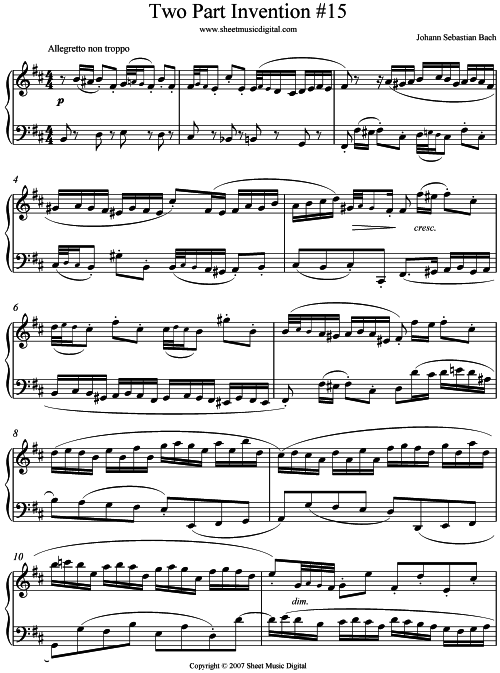Lesson 36: ii-V-i Harmonic Min.

This exercise is a (second) example of using a harmonic minor scale to create a melody over a minor ii-V-i progression. To do this we use the harmonic minor scale of the i chord. For example in a D-7b5 (ii),

Free Jazz Education and Music

This exercise is a (second) example of using a harmonic minor scale to create a melody over a minor ii-V-i progression. To do this we use the harmonic minor scale of the i chord. For example in a D-7b5 (ii),

This exercise is an example of using a harmonic minor scale to create a melody over a minor ii-V-i progression. To do this we use the harmonic minor scale of the i chord. For example in a D-7b5 (ii), G7b9,b13

Using odd rhythmic groupings when improvising can be challenging. How many times have you tried to play a seemingly innocent group of 3, 5 or 7 while improvising over a song in 4/4 only to find that you’ve gotten turned

Here’s another beautiful melody from the Bach 2 part inversions that comes from the harmonic minor scale. In this lesson I sing the phrase in one key (concert Ab minor) and then play it through all 12 keys. I really

In lesson 31 we’ll take a small melodic fragment from the Bach 2 part inversions and both play it and sing it through the diatonic chords found in concert Eb major. I enjoy taking a small phrase from any number

Since I developed carpal tunnel syndrome in 1990, I began to sing as a way of practicing the saxophone without using my hands. After my operation, I could not use my hands to play the sax for 4 months so

This is a melody taken from the harmonic major scale. The b6 mode of harmonic major outlines a major 7 chord with a #5, a #9 and a #11. The melodic line starts with a simple “shell voicing” (the root,

This is a short etude I wrote over the chord changes to My Shining Hour in concert C. The etude utilizes a lot of modern-ish concepts in terms of rhythmic groupings and harmonic/triadic substitutions. You’ll find several uses of #9

This is exercise works as a supplement to my book “Jazz Vocabulary Vol. 1 Harmonic Major” or on its own. There are three mp3s for this scale practice below, one at 40bpm, one at 80 bpm and one at 160bpm.

In lesson 20 and 21 we worked on using chromatics as melodic material over specific harmony. Continuing along these lines, this exercise is another ii-7 – V7- Imaj7 using the chromatic scale. The melody ascends from the minor 3rd

Although we all practice chromatic scales over the years, sometimes it’s challenging to actually use them as convincing melodies while improvising. One thing I’ve noticed is that every other note of a chromatic scale creates a whole tone scale, and

Here’s a short melody I worked out using minor 3rds descending by half steps. It works well as a V7 to i minor cadence and after the descending minor 3rd passage I added a short 5 note minor melody to